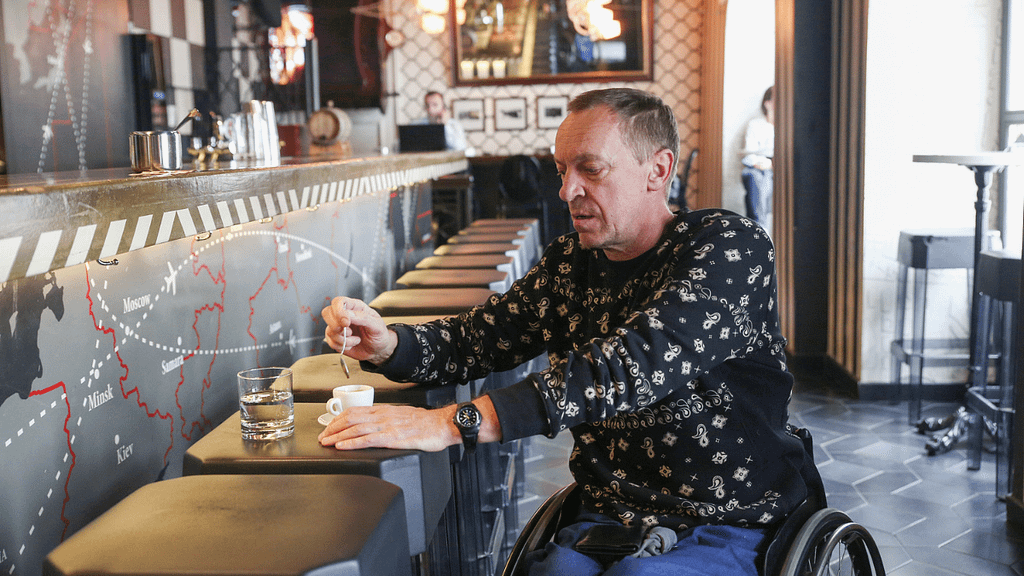11 Nov Restaurant Accessibility: 5 Things Being Overlooked
How do we set the bar for accessibility in restaurants?
When asked this question, most would refer to the Americans with Disabilities Act (ADA). But the fact of the matter is this: ADA requirements are the bare minimum of accessibility. Many restaurants don’t fully meet them; even if they do, they may not address other obstacles that prevent non-ambulatory customers from having a comfortable dining experience.
Then again, it’s rare to see restaurant owners who know firsthand the challenges of using a wheelchair in an ambulatory society. Take a trip to East Harlem, and you’ll find an example of the opposite: Contento, a restaurant that shows us what the world looks like when diversity is the standard. Wheelchair-level bar seating, navigable space between tables and a stylish, high-end atmosphere that seamlessly integrates accessible features create an inviting space for all diners. The difference? Two of the owners are wheelchair users, and understand the importance of, quite literally, allowing non-ambulatory diners “a seat at the table.”
In a New York Times review of the restaurant, Pete Wells writes, “Contento suggests how different dining rooms might look if all restaurateurs thought about accessibility as a right, rather than a business decision. [Co-owner Yannick Benjamin] and his partners there share a vision of hospitality that seems radically new but is in fact quite simple: to make it easy for people to enter the front door and enjoy their time inside, whether they arrive in a wheelchair, with the help of a guide dog, or with no assistance at all.”
Some of the features that make restaurants like Contento more accessible are not necessarily inventive or even creative to wheelchair users—they’re common obstacles that non-ambulatory diners simply deal with at other restaurants. But businesses can do better. Here are a few ways that accessibility can be improved in dining establishments.
1. Space for mobility
The most basic need for non-ambulatory customers is the ability to navigate a space with their mobility device, and yet, it is not always met. Too often, dining tables are crowded together, or the layout itself is too narrow to accommodate a wheelchair, walker or scooter. Alternatively, a restaurant that claims to be accessible may not have adequate space when chairs are pulled out for seated customers. This creates an awkward situation for those who have mobility devices, as they must choose to accept the lack of accommodation or leave the establishment.
2. Self-serve items within reach
Visiting a counter-service restaurant can be difficult for patrons with mobility devices, as self-serve counters are often too high or have cabinets underneath that prevent wheelchair users from pulling in closer. Even if they are the correct height, items like condiments, cups and lids, and napkins are often set back on counters to allow space for customers to set their trays down. However, this prevents most non-ambulatory customers from reaching the items they need and serving themselves.
3. Restrooms that go beyond ADA
Restrooms are almost always a problem area for patrons with disabilities. There may be a handicap stall, but is there really enough space outside the stalls for mobility devices? Is there a sink that is reachable from a seated position, or do cabinets beneath the sink prevent access? Further, some patrons may require toileting assistance. Is there a private, family-style restroom to meet their needs, or more importantly, an adult changing table? It is important to consider these features to offer a comfortable restroom experience for all customers.
4. Staff awareness of diversity
It may sound like common sense, but general lack of awareness can make diners who have disabilities feel unwelcome in an establishment. Often people with mobility issues or other disabilities are overlooked and do not receive the help they need, which can make going out to eat challenging and even stressful. Restaurant staff should be trained to notice customers who have mobility issues and attend to any special needs they might have. It’s as simple as taking note of potential obstacles in your restaurant and offering help when needed.
5. Digital accessibility
Since not every restaurant accommodates people with disabilities, customers who have special needs will most likely research a restaurant before visiting. Having an accessible website shows users that your business is aware of customers’ diverse needs and is making the effort to meet them. It sends the message that your space will be accommodating as well, which is why digital accessibility is just as important as a restaurant’s physical space.Business owners should consider web features like photo captions for the visually impaired; text-based equivalents for audio and video files; keyboard-accessible website functionality; and text that is easy to read and understand (in other words, avoiding jargon and complicated descriptions). It’s also helpful to indicate the location of accessible entrances and other accommodations for diners with special needs on the restaurant website.
We want to hear from you.
Do you have a disability? If so, what is your biggest frustration when going out to eat? What else can restaurants do better to meet your needs? Alternatively, consider your favorite restaurant—what do they do really well to accommodate all diners that other businesses should follow? Contact our team to let us know your thoughts.
Back to all blog posts




